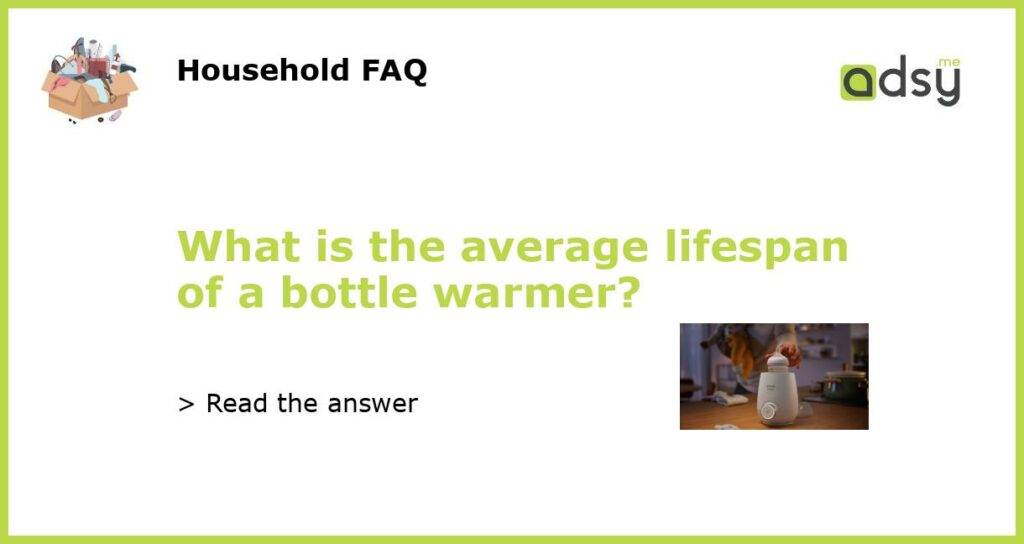The Importance of Bottle Warmers
Bottle warmers have become a must-have item for new moms. They offer a convenience that can’t be beaten. It used to be that parents had to heat baby bottles in pots of boiling water or run them under hot tap water. Not only is this time-consuming, but it’s inconsistent. Temperature can be hard to judge, and it’s easy to overheat the milk. Bottle warmers have solved these problems, making bottle feeding much easier and safer.
Lifespan of a Bottle Warmer
The lifespan of a bottle warmer can vary, depending on the quality of the product and how often it’s used. On average, a bottle warmer should last about 1-2 years. This could be shorter or longer, depending on usage and care.
Factors that Affect Lifespan
The lifespan of your bottle warmer can be affected by different factors. One is the type of bottle warmer you have. There are several different types to choose from, such as electric or water-bath warmers. Electric bottle warmers tend to have a longer lifespan than water-bath warmers. The frequency of use also plays a role. If you use it multiple times a day, it may not last as long as if you only use it occasionally. Lastly, proper maintenance is key. Cleaning the warmer regularly and following manufacturer’s instructions can extend its lifespan.
Signs of Wear and Tear
There are a few signs that your bottle warmer might be nearing its end. One is if it takes longer than usual to warm up a bottle. This could mean that the heating element is starting to fail. Another is if the warmer doesn’t seem to heat up the bottle enough. This could be an issue with the thermostat. Lastly, if you notice any cracks or warping in the plastic, it’s time to replace it.
Overall, bottle warmers are a great investment for parents. They make feeding time more convenient and safer for babies. While the lifespan can vary, it’s important to choose a quality product and take good care of it. When it starts to show signs of wear and tear, it’s time to replace it for the safety of your little one.






